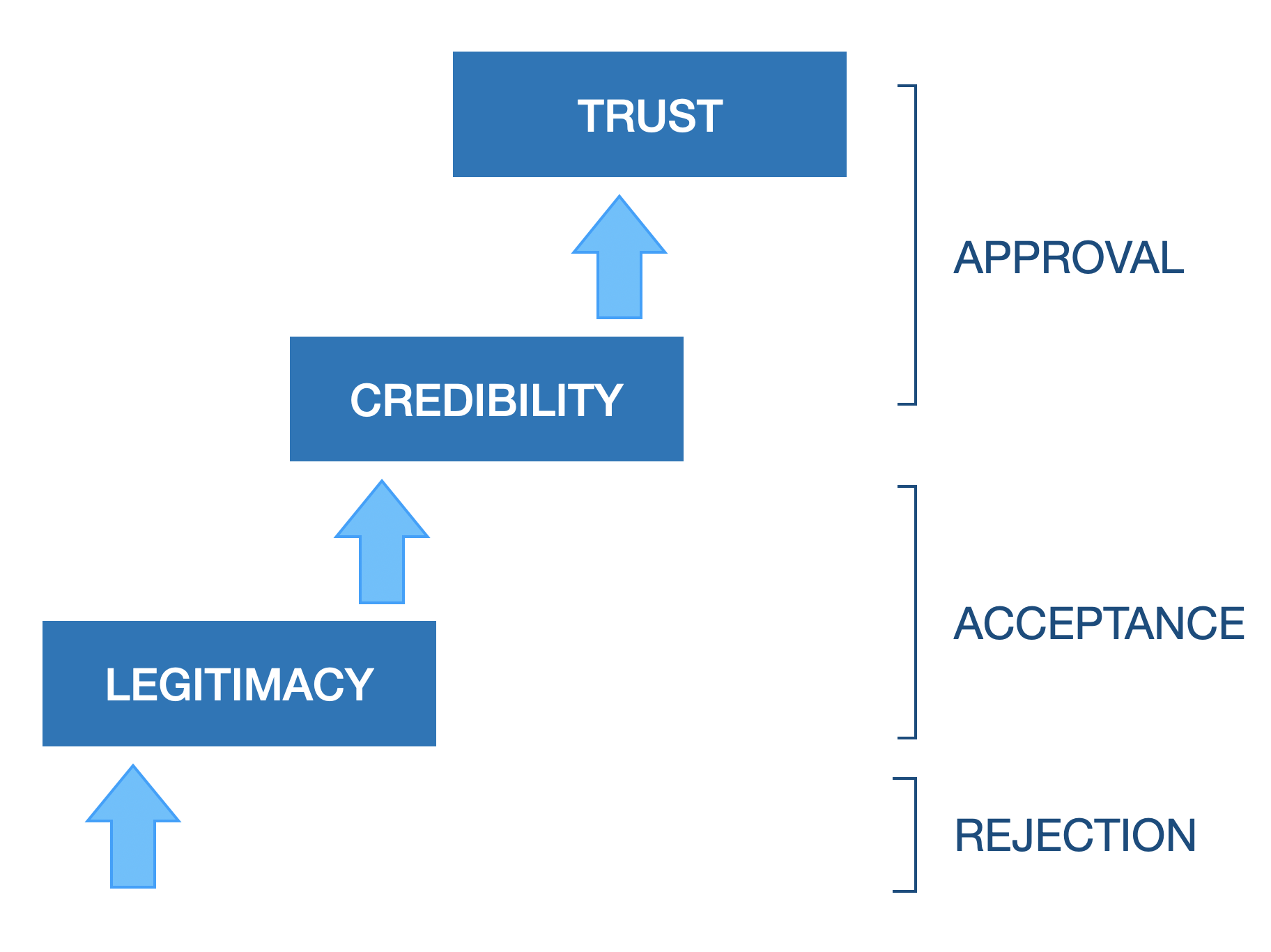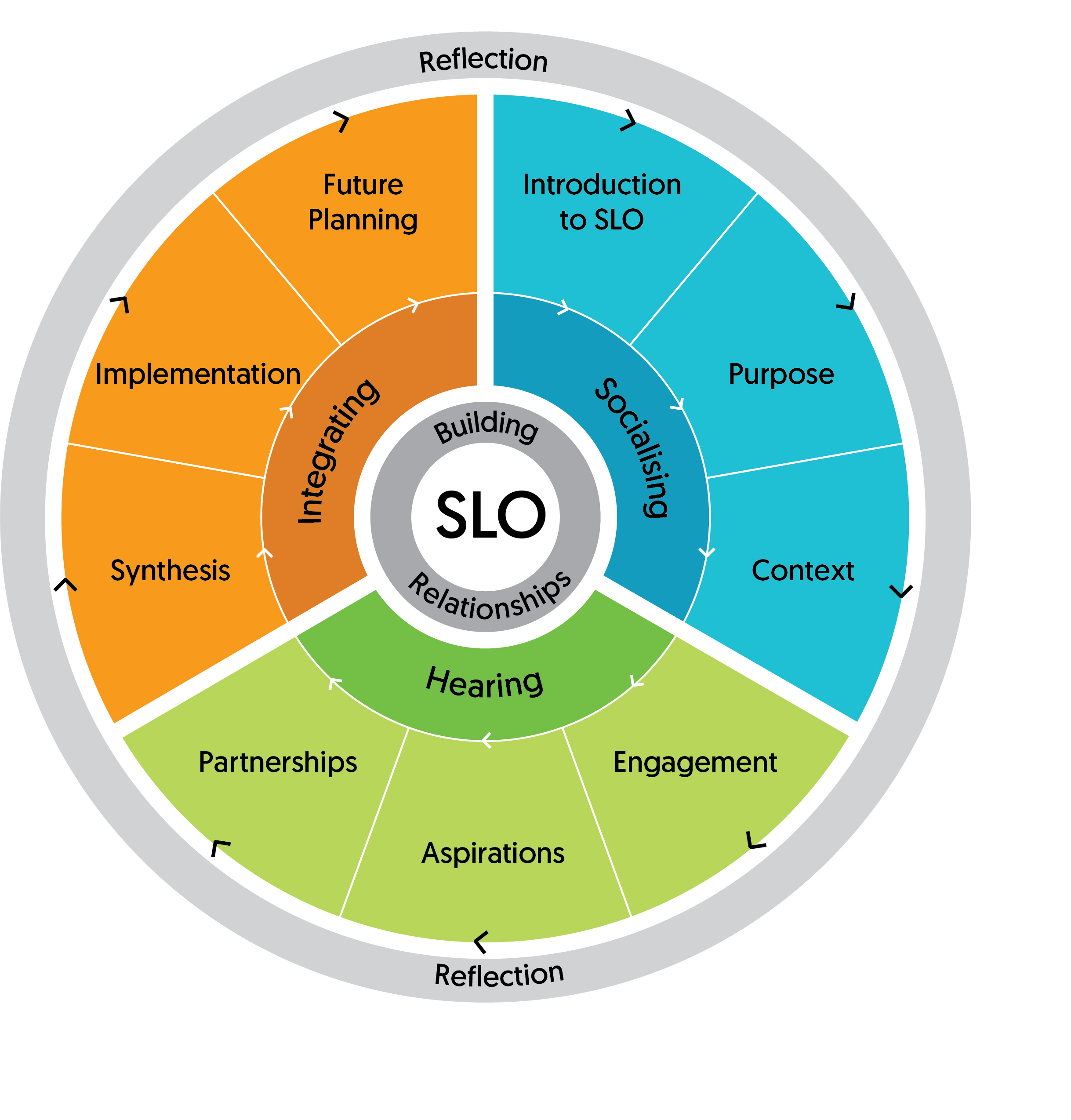Social Licence to Operate
Getting ongoing approval from the local community and other stakeholders.
Industry and government organisations need to consider stakeholder and community aspirations when carrying out operations and research involving potentially risky actions or innovations. This requires building strong relationships and gaining stakeholders’ ongoing acceptance, approval, or trust through the genuine consideration of broader societal issues and stakeholder concerns. The approach of building acceptance and approval, (Figure 1) is central in gaining Social Licence to Operate (SLO).
SLO is broadly defined as the "…ongoing acceptance or approval of an operation by those community stakeholders who are affected by it" and, by its nature, it may be revoked at any time. In a research context, it is about designing research and innovation that anticipates and responds more deliberately to uncertainty and complexity, and provides more effective and equitable results.
Thereby reducing unintended negative consequences. It pays special attention to ethics, gender equality, citizen engagement, education, open knowledge, and governance. These are the key issues that research and innovation have failed to prioritise in the past and as a result, some inequalities or negative consequences may have unintentionally occurred.

Figure 1: Steps towards gaining a social licence. (adapted from Thomson & Joyce, 2008).
Researchers from Manaaki Whenua developed a framework and associated methods, with a strong indigenous influence, to assist organisations and projects in working towards gaining social licence for their work. The framework consists of four phases:
- Socialising
- Hearing
- Integrating
- Reflection

Figure 2: An overview of building Social License to Operate Relationships.
Constructive relationships between organisations and their stakeholders sit at the heart of processes aiming to establish or maintain SLO. Relationships are integral to the entire process outlined in this model. Recognising the importance of relationships, and the quality of those relationships, is a key step in an organisation’s efforts to build and maintain SLO.
The socialising phase of the model is about ensuring a common and accepted understanding of the concept of SLO. Hearing revolves around engaging with stakeholders; identifying their aspirations and assessing possible partnerships. SLO is “issued” by communities and stakeholders, so understanding their perceptions and expectations is important for those wishing to develop a SLO. The integrating phase is about co-developing the views and expectations of the stakeholders into the organisation’s processes and procedures in a way that fosters SLO and promotes participative and learning opportunities. Working towards SLO is a dynamic and evolving process — learning opportunities are important and need to be fed back into the process in a continuous reflecting step.
Each of these phases and steps have associated methods.
Socialising
The socialising phase of the model is about ensuring a common and accepted understanding of the concept. This phase has three steps:
- Introduction to SLO
- Purpose
- Context
The Introduction to SLO involves exploring the concept of SLO with the organisation to ensure they understand what the concept is and that this concept is what they are interested in. The next step involves determining the Purpose behind why SLO is required; what issues are driving this purpose and what criteria can be used to measure success. Understanding the Context is the third step in this phase. Identifying the level of commitment, which stakeholders are considered important, what has already been done and what engagement has taken place are key aspects of this step.
Introduction to SLO
Purpose
Context
Hearing
Hearing the views of the stakeholders and understanding their expectations is essential in building and developing SLO. This phase revolves around engaging with stakeholders, identifying their aspirations and assessing possible partnerships.
This phase has three steps:
- Engagement
- Aspirations
- Partnerships
An engagement plan with a clear purpose and criteria that measure the impact or level of success with stakeholder engagement should be designed. This plan will enable levels of influence/interest and engagement to be determined for each stakeholder. As part of the engagement plan, stakeholder Aspirations will be identified to ensure that the right questions are being asked in relation to SLO and to identify a goal or vision to work towards. Finally, the Partnerships step is about working collaboratively with stakeholders, building trust, and maintaining connections.
Engagement
Aspirations
Partnerships
Integrating
Integrating involves co-developing the views and expectations of the stakeholders into the organisation’s processes and procedures in a way that fosters SLO and promotes participative and learning opportunities. This phase has three steps:
- Synthesising
- Implementation
- Future planning
Synthesising involves collecting and evaluating data so that stakeholders’ views can be integrated into an organisation’s processes and procedures. This will enable stakeholder views to be implemented (or applied) in the organisation’s processes and procedures in more participatory ways that encourages mutual learning relationships. SLO exists at different scales and time frames so the process needs to be continually managed for, rather than obtained. Therefore, an element of Future planning is required to ensure the ongoing process of managing the cycles of SLO is sustainable and that there is a plan for how to maintain continued and meaningful engagement.”
Synthesising
Implementing
Future planning
If you are interested in talking to someone about SLO, contact the researchers.
References and further reading
Argyris, C. (2004). Double-loop learning and implementable validity. In Organizations as knowledge systems (pp. 29-45): Springer.
Ashworth, P., Lacey, J., Sehic, S. & Dowd, A. (2019). Exploring the value proposition for RRI in Australia. Journal of Responsible Innovation, 6(3): 332-339.
Mercer-Mapstone, L., Rifkin, W., Louis, W. & Moffat, K. (2018). Company-community dialogue builds relationships, fairness, and trust leading to social acceptance of Australian mining developments. Journal of Cleaner Production, 184: 671–677.
Moffat, K., Lacey. J., Zhang, A. & Leipold, S. (2016). The social licence to operate: a critical review. Forestry: An International Journal of Forest Research, 89(5): 477–488.
Stronge, D., Kannemeyer R., & Edwards, P. (2020). Methodological and analytical approaches to gauge social licence to operate MWLR Contract Report LC3750 Version 2. 19p.
Thomson, I. & Joyce, S. (2008). The social licence to operate: What it is and why does it seem so difficult to obtain? In Pesentation to the PDAC Convention, Toronto March, 2008. Retrieved from: https://oncommonground.ca/wp-content/downloads/PDAC_2008_Social_Licence.pdf.